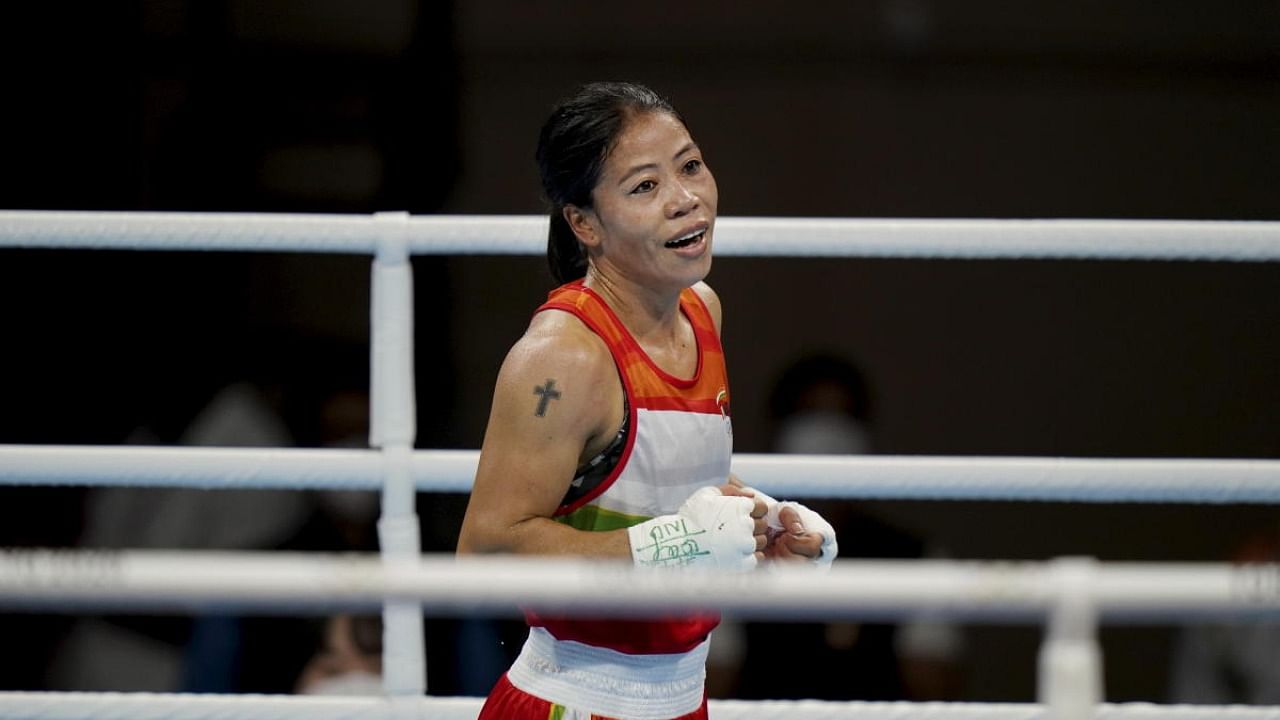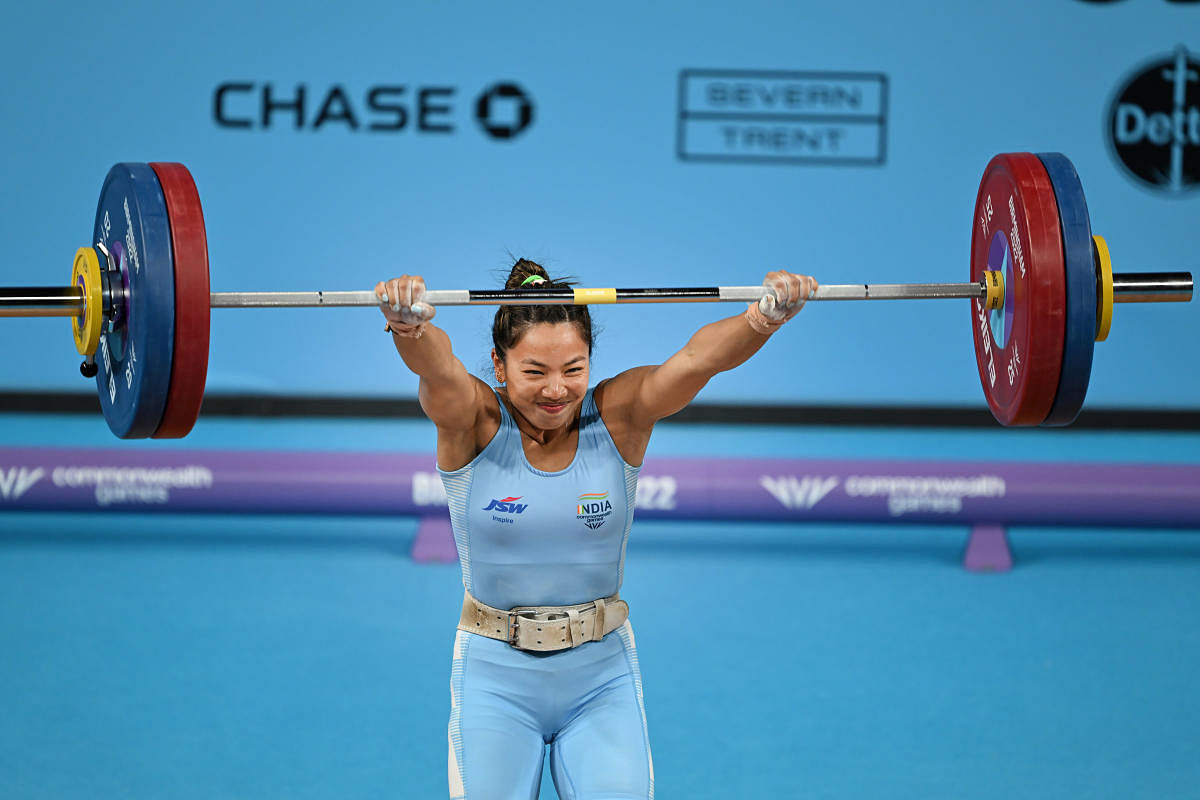

They all chuckled at the start, but it wasn't clear if their reaction was because they found the question amusing or because they thought it absurd that anyone would probe into something so obvious, so basic, so natural.
'Why are athletes from the Northeast successful?'
These eight words, while suggesting the success of Northeastern athletes at the 2022 Commonwealth Games in Birmingham, were meant to peel the layers and peer into the past for the secrets of the 'Seven Sisters'.
"We don't give up, especially the women," says Kunjarani Devi with remnants of the chuckle in the air still.
Kunjarani is arguably the most successful weighlifter India has ever had, and her stature-defying presence and confidence led to the likes of Mary Kom and Mirabai Chanu taking up sports.
But, though eloquent, she doesn't have the answers. Kunjarani offers the typical 'we are built that way', 'it's probably in our genes', and so on, but she doesn't have anything concrete to riff off of.
She does speak of the struggle, saying: "We hear all sorts of nasty things growing up and when we move to the mainland, but I think that's what makes us stronger. We are known to put aside all these petty things and focus on the job. Racism is a very real problem but if I kept thinking about what they thought about me, when do I have the time to think about me and my problems? So, I didn't listen. I had a goal. I went after it."
It's not just racism, but the indifference towards people from Northeast that can be unsettling. While the country was celebrating Jeremy's gold in the dead of night, a national TV news channel identified him to be from Manipur when he is actually from Mizoram.
While insisting that adversity fuels the need for a better future, Kunjarani forgets the premise of the interaction, digressing to discuss the athletes who have done well for Northeast of late.
Mirabai Chanu and Jeremy Lalrinnunga won gold, while Bindyarani Devi bagged a silver, all in weightlifting. Sushila Devi Likmabam clinched a silver in judo. Kunjarani notices that the Northeastern winning formula seems to have tapered off since the early success at the Games, but she is not fazed by it. "We will keep producing the best athletes," she says.
'But why?'
She chuckles.
Lalnghinglova Hmar, better known as Tetea, offers more. Tetea is the honorary secretary of Mizoram Football Association and an executive committee member of the All India Football Federation (AIFF). He also happens to be a history graduate from St Edmund’s College in Shillong.
"It's hard to say, but our upbringing has something to do with it," says the man who is revolutionising football in Mizoram. "With football, I know it has something to do with the fact that we have had a long list of successful players. When you see success, you gravitate towards it. That's why there are so many footballers from the Northeast.
"Also, we have a very physical culture. The topography of the Northeast makes walking harder and I think that makes us stronger. The air is thinner. We also have these indigenous games that we all take up as children, and that's a form a wrestling. I think that makes us unafraid of taking on physical tasks."
Longjam Meena Devi is a sociologist from Manipur, who is currently working on a book about a 70-year-old woman near Imphal nurturing young female athletes in the city, reckoned the same.
In her attempt to understand the Septuagenarian and her impetus to train these girls, Meena has spent time with athletes, forging interesting theories, but she has studied the land for far longer and has an interesting hypothesis.
"From the time we were an independent kingdom to the time of the British invasion, we have always been at war, within ourselves and against invaders," she says. "We have fought for so long that we have developed warrior tendencies. These tendencies are furthered by these festivals that we have. During the festivals, there are a lot of sports played, but most importantly, we play something like wrestling and all the kids participate in it."
She continues: "This is an agrarian society which has had to defend itself from a lot of invaders. This is also why you see so many successful women athletes from here. For the longest time, men have had to go fight wars and were shipped off to other countries and so the women had to take over the role of running the house, and eventually, they started dictating the economy."
Meena speaks about the Ima Market in Imphal which is the only market in the world that is run entirely by women, and says men have also given women autonomy because they understand their own impermanence in the space.
As the conversation begins to veer, Meena brings herself back to the question at hand. "These indigenous games are very important. There is some truth to the fact that polo was started here, but more than that, it is games like rugby, wrestling, running races, hill climbs - all local versions of it - that make us stronger," she says.
"Also, the hills have a way of tiring you out," she laughs. "Maybe that's just it."
She is not wrong. High altitude and steep terrain are a great breeding ground for Northeast athletes because their lungs, which are capable of working under duress, can work at ease on the mainland. And the topography forces their musculature to take on more load.
"There is a reason they aren't big people," says Dr Nipul Bora from Sikkim. Nipul has been an orthopedic for close to a decade and has made attempts to study the local population in comparison to others in the country. "... it's because being stocky makes you compact and that's usually very helpful in the hills. You also conserve energy by being small. Generally too, if you notice, people from the hills are smaller."
A renowned anthropologist from the Dibrugarh University in Assam did not want to be named, but he did lend a valuable angle to the topic, saying economy, not geography, has played a bigger role in people taking up sports in the region.
"Take Manipur for example, there is not much to do. The economy is weak, and there are no industries to work in. People are not backward here, they are poor. Not so poor that they don't have a roof over their heads, but if you compare it to some parts of the country, they are not doing so well," he said.
"So, people have to do something to make money so you either go into the army or you take up sports or you go to the army and continue to pursue sports. See, we have a lot of successful athletes here, and since it's a small region, there is access to these stars."
Kunjarani is one of those stars. Besides inspiring many of the current athletes through her story and the accolades she still wears with pride, Kunjarani is proactively helping athletes in her community realise their potential.
Fascinating theories all, but there is a sliver of truth in all of them, and that should be enough to sate our curiosity for the moment.